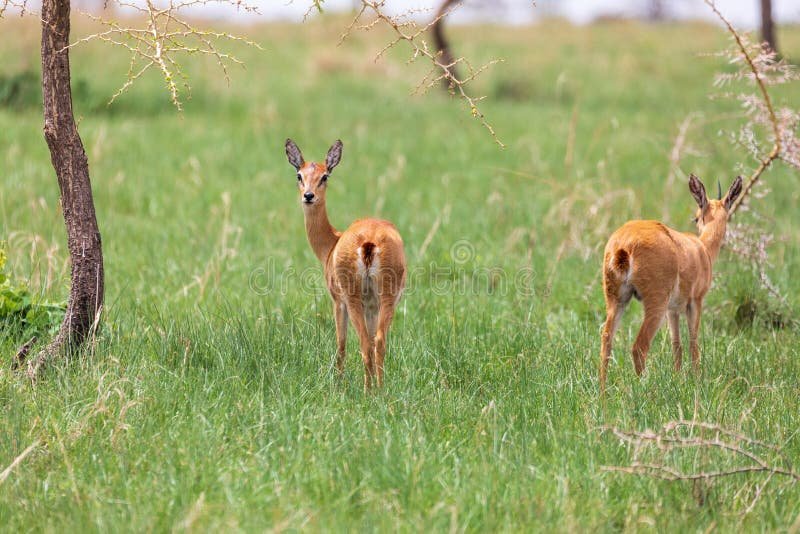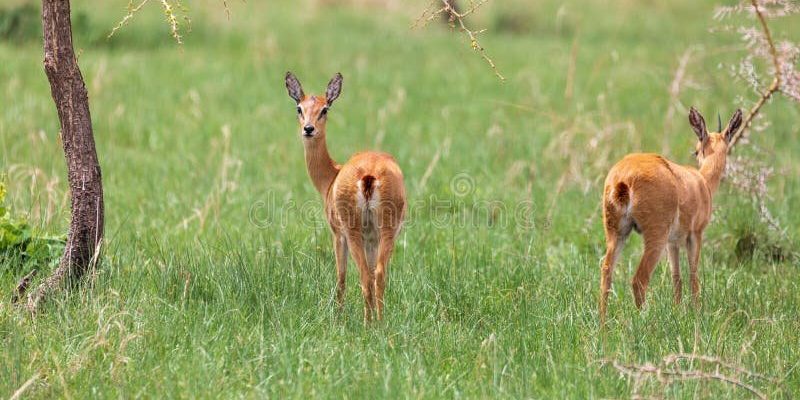
So, how do these animals ensure that their young grow up to be strong and independent? Whether you’re a nature lover or just curious about how wildlife functions, there’s a lot to learn about the nurturing ways of oribis. Let’s dive into their world, explore their behaviors, and see what makes their parenting style so special.
Understanding Oribi Behavior
Oribis are small, agile antelopes found in Eastern and Southern Africa. They prefer open grasslands or bushlands, often hiding in thick cover to evade predators. This natural instinct to blend into their surroundings plays a crucial role in how they raise their young. The mothers are incredibly vigilant, always on the lookout for potential threats while keeping their fawns safe.
You might be wondering how oribis communicate with their young. Interestingly, they use a variety of sounds and body language. For instance, a mother will often call her fawn with gentle bleats, guiding them as they learn to navigate their environment. This communication is vital, especially since the young fawns typically don’t accompany their mothers until they’re strong enough. It’s all part of the learning process, teaching them essential survival skills.
Nesting and Safety
One of the first steps in how oribis raise their young involves creating a safe space for their fawns. After giving birth, a mother will often find dense vegetation or tall grass to hide her newborn. This “nesting” behavior helps protect the baby from predators. Imagine a tiny fawn, covered in spots, curled up and nearly invisible among the grass. The mother will stay nearby, watching over her little one from a distance.
This careful hiding phase lasts for about two to three weeks. During this time, the fawn learns to stay still and quiet—two crucial skills for avoiding detection. Mothers will return frequently to nurse their young, ensuring that the fawn has all the nourishment it needs to grow strong. It’s a delicate balance of nurturing and keeping safe, showing how instinctual these behaviors are for both mothers and their offspring.
Feeding and Nutrition
Once the fawns have gained a bit of strength, the real adventure begins! Oribi mothers encourage their young to start grazing on grass and browse, gradually transitioning them from milk to solid food. This step is crucial for the fawn’s development. Since oribis are herbivores, their diet mainly consists of various grasses, leaves, and shrubs.
In the wild, it’s fascinating to see how a mother will lead her fawn to different feeding spots, often selecting the best vegetation for their health. It’s like a lesson in choosing the right foods—something we can all appreciate! They will often munch on young shoots or tender leaves, which are packed with the nutrients needed for growth.
One might say that a mother’s role extends beyond just providing food; it’s about teaching her young the best foraging practices. This knowledge is vital for later survival, especially when the fawn grows older and starts to explore independently.
Protecting Young Ones from Predators
In the wild, danger lurks around every corner. Oribi mothers are well aware of this threat and prepare their young accordingly. A mother will constantly monitor her surroundings, using her keen senses to detect any potential predators like lions or hyenas.
When faced with danger, oribis display remarkable instinctual behavior. They often lead their young to a safe spot, using their agility to escape quickly. The mothers can make sharp turns and leap gracefully, creating a distraction while guiding their fawns to safety.
It’s almost like a well-rehearsed act in a play: the mother takes the lead, while the fawn learns to follow closely. They work as a team, which not only enhances their survival rate but also strengthens their bond. You can really see how their relationship is a mix of teaching, protection, and trust.
Social Structure and Learning from Others
Oribis live in small groups, often consisting of females and their young. This social structure plays a significant role in how they raise their offspring. Young oribis benefit from observing the interactions and behaviors of other adults in the group. They watch how mothers care for their fawns and pick up crucial social skills.
This communal learning is vital. When fawns play with one another, they not only develop physical skills but also learn about social dynamics. It’s a bit like how children learn from their peers. They get to practice their communication and playfulness, which are essential for becoming well-adjusted adults.
Moreover, the presence of multiple females helps offset the risks of predation. While one mother may be preoccupied, others keep a lookout, ensuring that the whole group thrives together. It really illustrates the saying, “It takes a village,” doesn’t it?
Independence and Maturity
As oribi fawns grow, they gradually gain independence. By the time they are about six to eight months old, they can often forage for themselves and start to wander further away from their mothers. This transition is a critical time in their lives.
Mothers will continue to watch over their young, but they begin to step back, allowing the fawn to explore more on its own. It’s an important balance; while the mother provides support, the fawn learns to rely on its instincts and skills. This phase is like a young adult stepping out into the world for the first time, filled with a mix of excitement and trepidation.
Ultimately, once they reach about twelve months, young oribis are ready to leave their mothers and join other groups or even form their own. This independence is a significant milestone, showcasing the effectiveness of the mother’s nurturing and protective behaviors throughout their early life.
The Importance of Conservation
Understanding how oribis raise their young highlights the importance of conservation efforts. Due to habitat loss and hunting, oribi populations are declining in some areas. Protecting these gentle creatures ensures that they can continue their incredible life cycle for generations to come.
Conservation efforts often focus on preserving not just the animals but their natural habitats as well. By maintaining grasslands and ensuring safe environments, we’re helping oribis thrive. It’s critical that we support initiatives that protect wildlife and the ecosystems they depend on.
When we think about the nurturing ways of oribis, we see that it’s not just about survival; it’s about creating a future. By valuing and protecting these animals, we’re ensuring that their remarkable stories of parenting continue to inspire us.
As we wrap up, it’s evident that the world of oribis is a beautiful mix of instinct, care, and the delicate balance of nature. By understanding their behaviors and challenges, we can appreciate the wonder of wildlife and the fascinating ways they raise their young.

